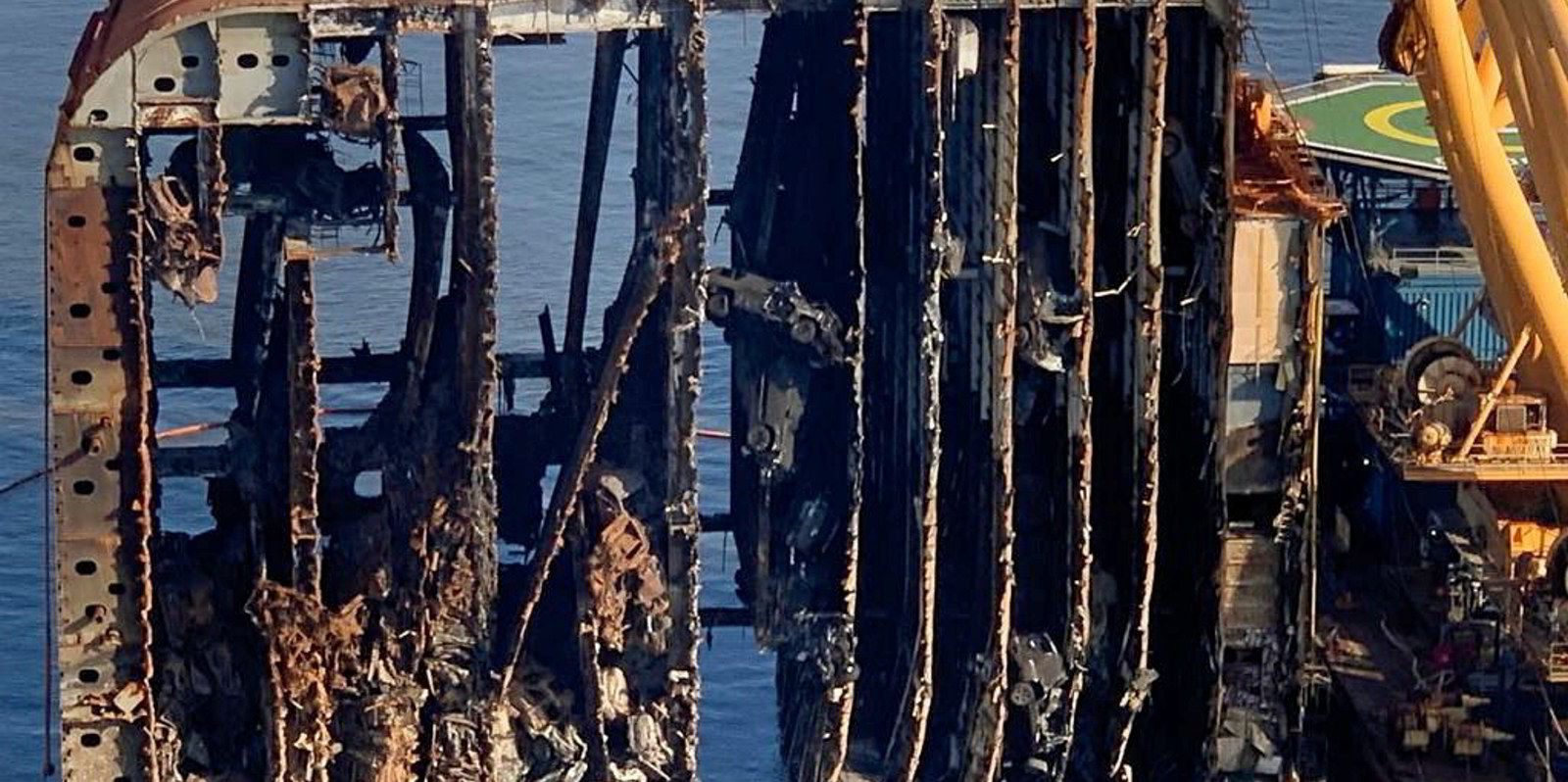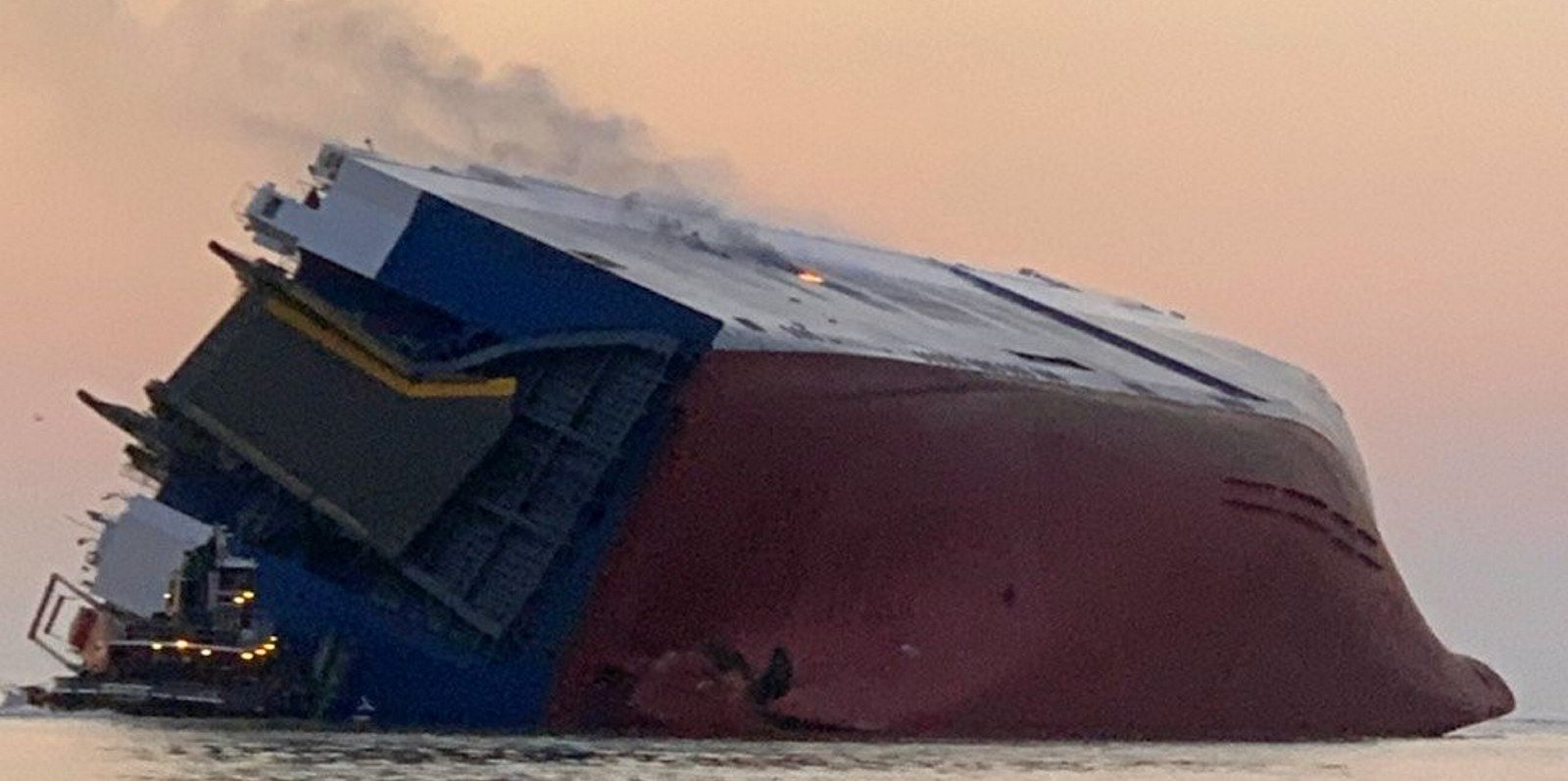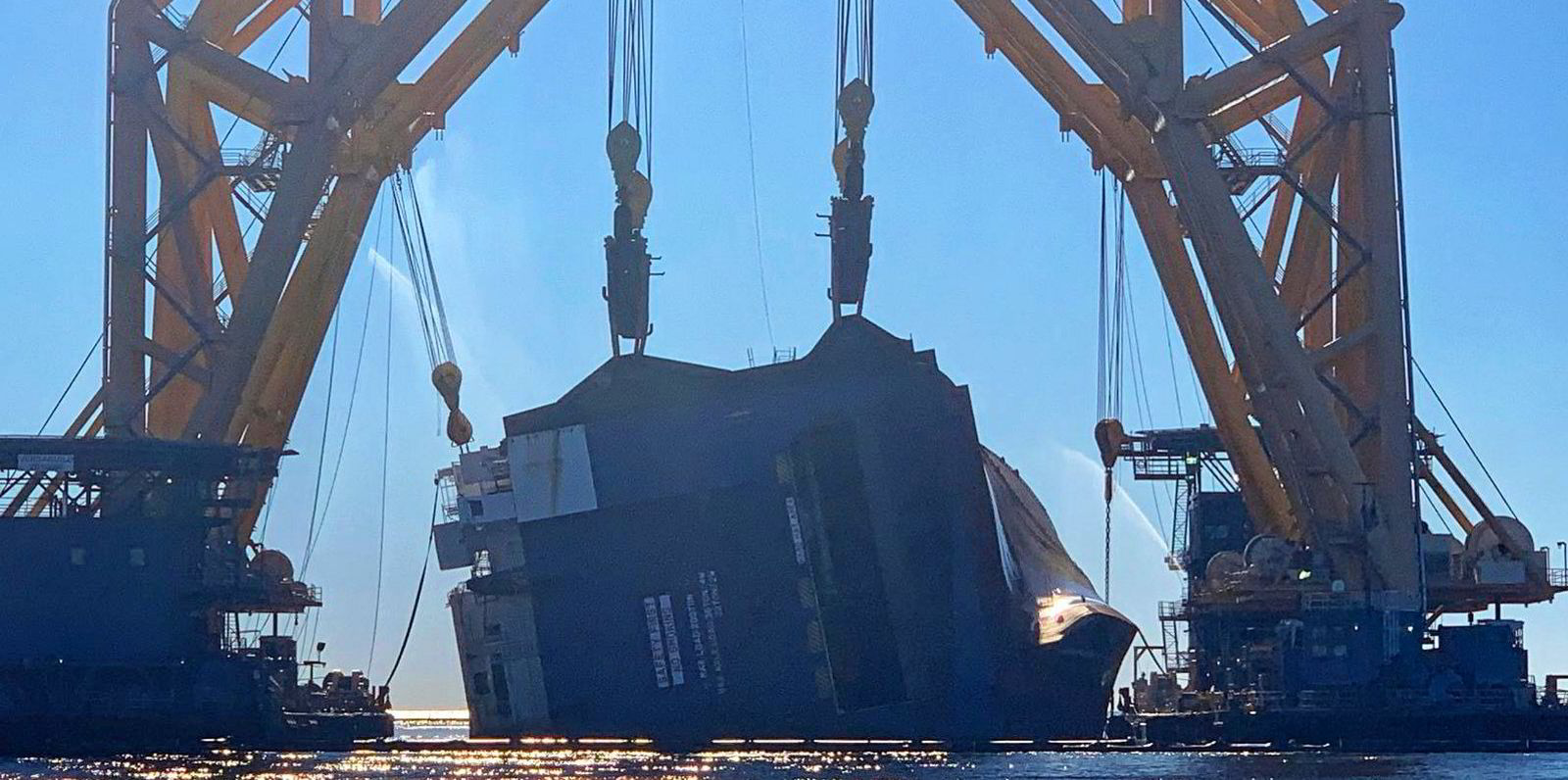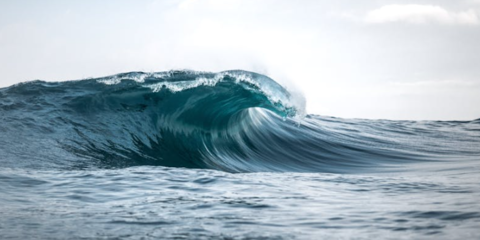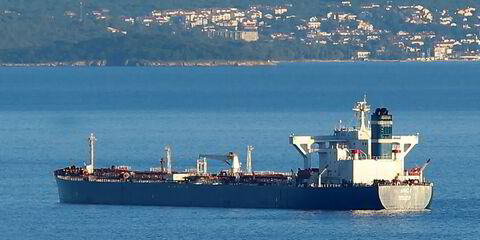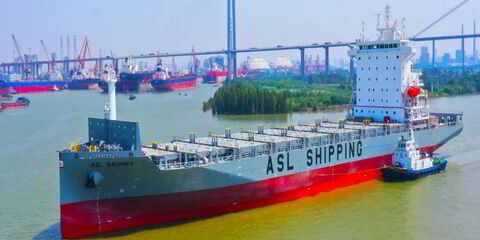Salvors are preparing to remove the fifth and final section of the wreck of the car carrier Golden Ray from St Simons Sound, at the US port of Brunswick.
As the long-running wreck removal draws to a close, two years after the ship grounded, celebrations will be tempered by figures that show total insurance losses running at around $1bn.
A safety report by the US National Transportation Safety Board (NTSB) into the casualty revealed the hull loss at $62.5m, and the cargo loss at $142m.
The 7,700-ceu car carrier Golden Ray (built 2017) was carrying 4,100 new cars when it went aground.
The current protection and indemnity exposure has been estimated at $842m, but it is unclear whether this is exclusively salvage costs, or also includes P&I clubs’ share of the liability for cargo and hull losses.
The Golden Ray is already one of shipping’s most expensive wreck removals, second only to the 114,000-gt cruiseship Costa Concordia (built 2006) after it grounded off the island of Giglio in 2012, running up total insurance claims of around $2bn.
The NTSB safety investigation concluded that the Golden Ray's chief officer had made an error in entering ballast quantities into the stability calculation programme, which led to his incorrect determination of the vessel’s stability.
Doors left open
The agency’s report said the ship’s operator, G-Marine Services, had failed to verify stability calculations, and watertight doors had also been left open by the crew.
The NTSB said: "The two watertight doors had been left open for almost two hours before the accident. However, no one on the bridge ensured that the doors were closed before departure from the port."
Investigators also said the ship did not meet international stability standards while leaving the port and was less stable than the chief officer calculated.
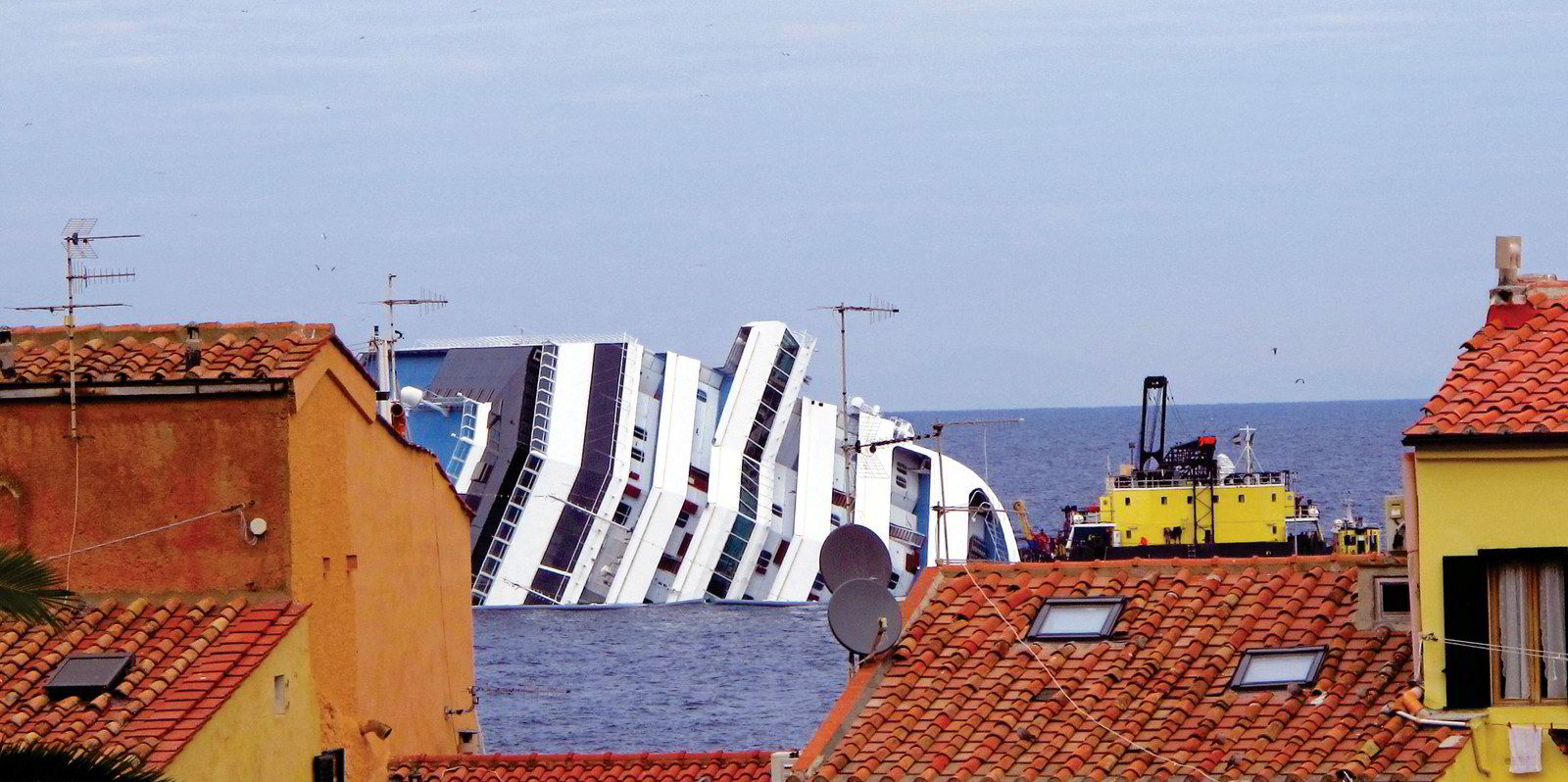
With the safety report seeming to indicate the shipowner — South Korea’s Hyundai Glovis — was mainly liable for the casualty, the costs are likely to fall on its P&I insurer.
The Golden Ray was entered with North P&I Club, but most of the claim will be shared with the other 12 members of the International Group of P&I Clubs through its claims pool. The group has reinsurance cover in place for claims of more than $100m.
Mounting salvage costs
Insurers will be hoping the removal of the final section of the Golden Ray stops the mounting costs.
The job, handled by US firm T&T Salvage, has been hit by a series of problems including fires, oil leaks and Covid-19-related issues.
In a YouTube video, International Group chairman Paul Jennings said rigorous environmental protection measures had also contributed to the high cost of the wreck removal.
The final section will be loaded onto the dry dock and moved to a response facility near Mayor’s Point Terminal for further dismantling.
After that, the remaining salvage work involves clearing up any sunken debris in the area that has fallen out of the wreck. It is unclear how long this might take.
Environmental clean-up operations at Wylie Street public beach from an earlier oil leak are also set to continue.
